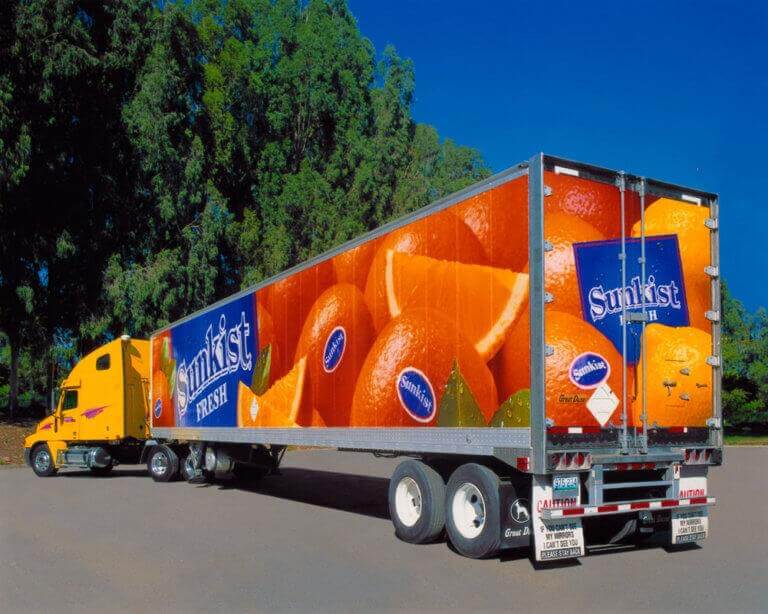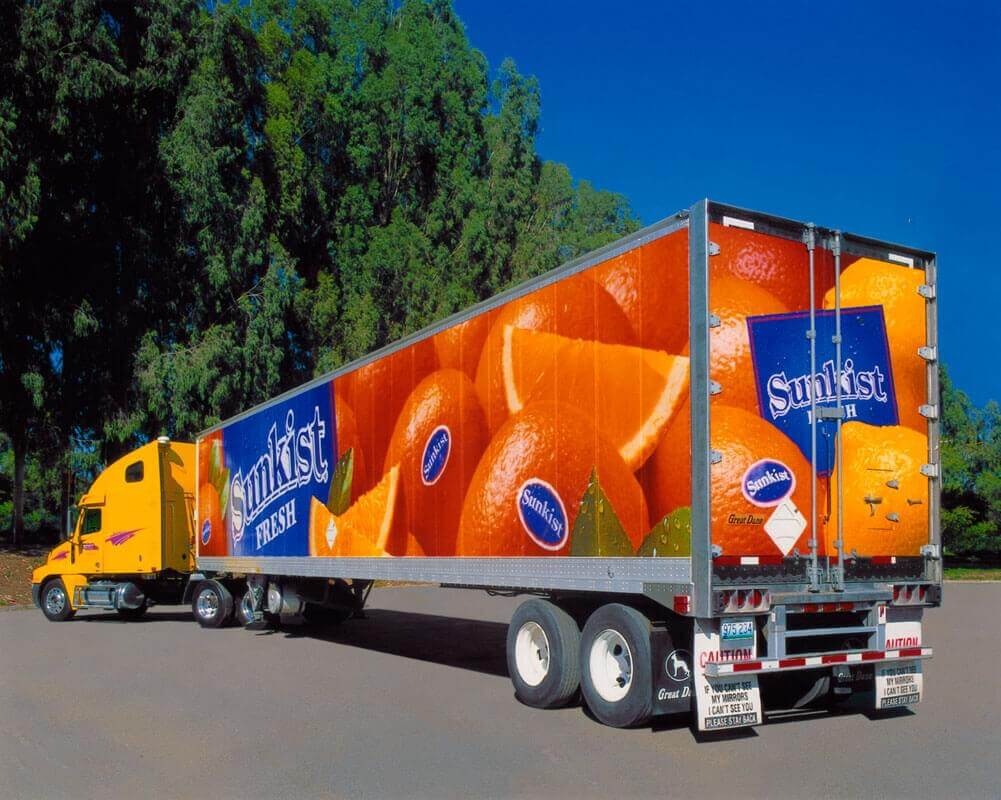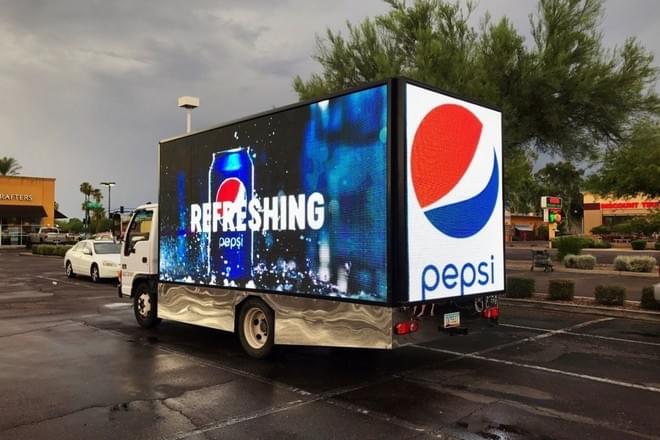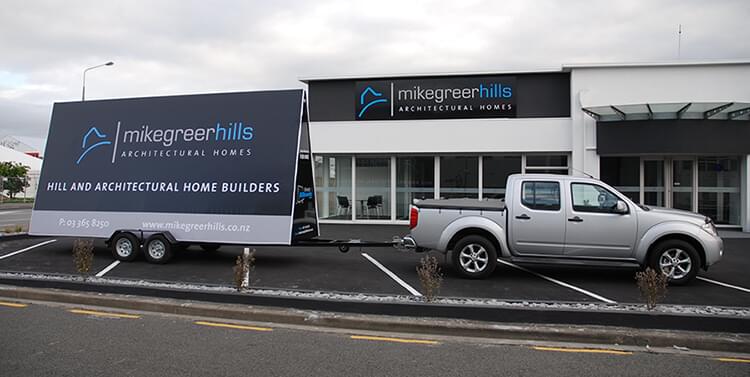
Mobile billboards are an essential tool for advertisers to create a direct response between consumer to business. Compared to statuesque, yet subservient, static billboards, mobile billboards have a higher conversion rate, a lower CPM, and a higher recall rate. And they’re constantly on the run! In order for advertised companies to increase their revenue and sales, their outdoor advertising choices must be impactful and remain substantial. A reliable number of impressions garnered, high levels of conversion, and uniquely targeted demographics are three reasons why advertisers choose mobile billboards. According to a study performed by Nomadic Genius, 80% of people from a 300 person group correlate conversion with increased sales. This connection speaks volumes about action-based advertising, which is what out-of-home campaigns on mobile billboards seek to do.
So we know that mobile billboards are meant for consumers to see and take action, by simultaneously being redirected to targeted ads, but what are the varieties of these OOH powerhouses? Truckside advertising, vehicle wraps, digital mobile billboards, and trailer billboards are all forms of moving billboards that have the ability to reach consumers and form direct responses. Let’s unpack the advantages and disadvantages of each, and see whereabouts these mobile billboards are most commonly dispersed. This will allow you to narrow down your ad choice and tailor your OOH campaign to give you the most effective results.

Truckside Advertising
This form of mobile billboard is typically two- or three-sided and placed on trucks already transporting goods, not necessarily affiliated with the advertised product, that are rented by mobile billboard companies. The ad is typically plastered on the truck by use of vinyl material. These mobile billboards are able to drive around for as many hours as desired, and can also be equipped with LED lighting making them visible during nighttime/early morning. Depending on the mobile billboard provider, truckside advertising may also allow for a “showroom”, meaning that the truck’s panels can be replaced with glass allowing for viewers to see inside, creating a 3D effect. Furniture and other products can be staged inside in order to maximize consumer interest by displaying a life-size product line. Truckside advertising is most commonly found on busy highways in major cities like Toronto, New York, Chicago, and Los Angeles.
Advantages:
– high reach; trucks can drive around as many areas as you want to see covered, and be redirected to different routes in order to gain more impressions from diverse sets of consumers
– affordable; this mobile billboard type offers the lowest CPM
– large and attention-grabbing; due to their big presence and high quality graphics, the mobile billboard is sure to be memorable and encapsulate a target’s mind
Disadvantages:
– standstills may occur; as much as these trucks are advertising on the road, some may be found parked unloading cargo; to avoid this from happening on a frequent basis, the truck tracking number is contacted by a mobile billboard supplier and fielded about their performance
– for short-term campaigns, truckside advertising can be expensive in terms of setup costs; if the truck is advertising on a monthly schedule, then it’s worth it

Vehicle Wraps
Whether partially or completely covered, vehicle wraps are a mobile billboard that work to promote a product/service on the exterior of a smaller vehicle. However, the TTC uses vehicle wraps on their large streetcar often times to display an upcoming flick or eccentric product creation. Vehicle wraps can be painted on the vehicle itself, but more likely they are constructed with vinyl sheets. They are most commonly seen on promotional cars driving through busy cities, or on public transit like buses and streetcars on direct travel routes.
Advantages:
– audience is well targeted; especially in the cases of vehicle wraps on public transit, they’re great at identifying what the commuter can be exposed to because it follows their route
– attention-grabbing; they’re significant visuals demand attention, and help people differentiate new products in the market
Disadvantages:
– higher cost; public transit vehicle wraps are competitively priced
– low availability of promotional cars; it’s often tricky to find car owners willing to decorate their cars with advertising if they’re not affiliated with the company

Digital Mobile Billboards
These are the future of outdoor advertising because they combine modern technology with traditional messaging. They can be mounted on trucks or trailers to display still ads or little commercials that intrigue people passing by. Digital mobile billboards typically show many ads at specific time intervals. The content continually changes. Using LED lighting and TV screening, digital mobile billboards can be found in highly populated places like outside sporting events, at city fairs, and top tourist destinations to draw crowds of attention.
Advantages:
– cost-saving if shared with other ad companies; compared to traditional mobile advertising, the costs are being split between other ad companies because you get a certain time slot
– they’re the brightest in the game; digital mobile billboards are near impossible to miss because of their televised, sensational impact
Disadvantages:
– expensive if only advertising one company; higher tech costs means more dough fished out
– if the ad is featured among other ads, then the time visible isn’t certain, and it could blend in with other companies also on the digital mobile billboards
– could be distracting to drivers, instead of influential

Trailer Billboards
These are thinner billboards that can be hauled behind vehicles with printed ads on one- or two-sides, giving the effect of a trailer attached to a vehicle. They can be lit with LED lights for nighttime reach. They can be found parked outside companies advertised, and on roads most prominently hauled on.
Advantages:
– versatile and easy to mount and remove
– multiple ads per billboard; you can feature two different ads on either side
– trailer billboards usually offer around 400 square ft of advertising, which is plenty of room for an effective message
Disadvantages:
– short-term advertising tool; trailer billboards are only meant to act as small tidbits of information, not necessarily a full campaign that lasts
– if the driver is inexperienced in hauling around a trailer billboard, they could find the trip hard to take
After looking at truckside advertising, vehicle wraps, digital mobile billboards, and trailer billboards, it’s important to differentiate what the different types of mobile billboards offer both businesses and consumers. Even though they have their share of disadvantages, they’re still proven to be an effective form of outdoor advertising that surpasses red flags, but stops at red lights.


